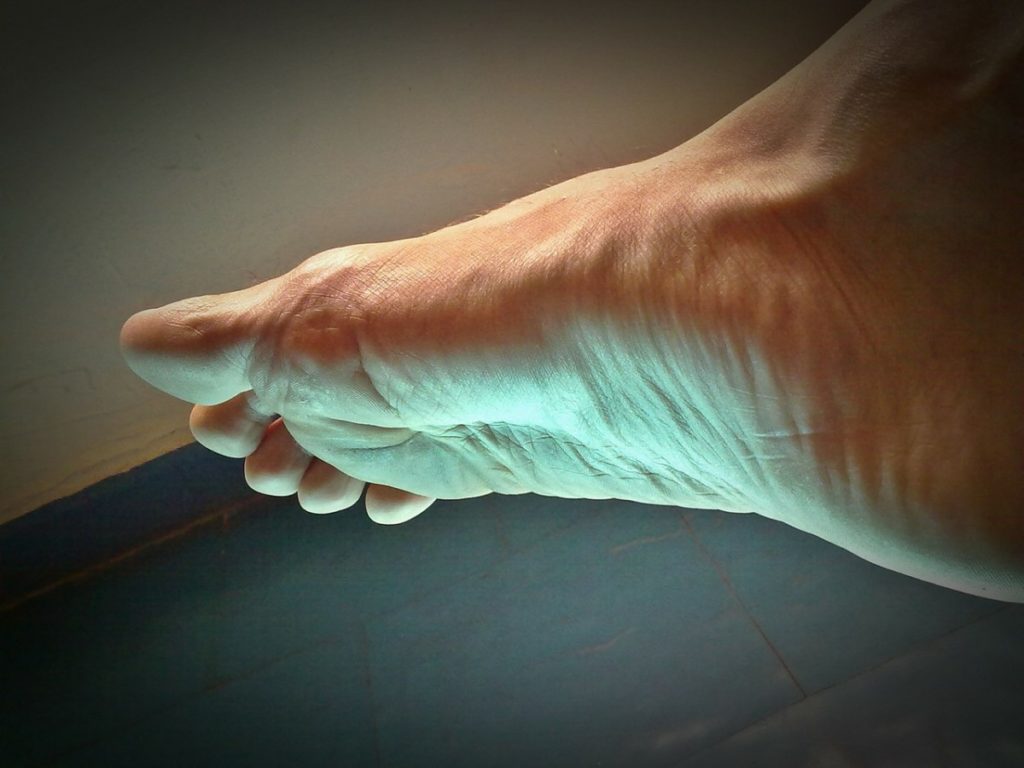
Plantar fasciitis is a type of heel pain. It’s one of the most common foot pain and noticeable because we spend so much time walking or standing on our feet every day. It’s mostly found among runners, overweight individuals and people who wear poor shoes. While it’s a real pain – literally – it is also treatable and preventable.
What exactly is plantar fasciitis?
The plantar fascia is a thick band of tissue along the bottom of your foot that connects your heel to your toes, like a bowstring. When it becomes inflamed due to overuse of this tendon, you’ll experience stabbing pain on the heel, especially in the morning.
Who does it affect?
Like we said, plantar fasciitis tends to affect runners or overweight people, but also people who spend a lot of time standing on their feet. Factory workers, waiters, retail workers, teachers or even people who choose a standing desk are more pre-disposed to experiencing plantar fasciitis. It also tends to affect people over 40.
It also affects people of foot types. People who are ramping up physical activity, particularly in the warmer months, may start to feel pain around the area. It also affects people with limitations in the flexibility around the calf muscles or who have ankle joint stiffness. The lack of mobility or flexibility forces people to shift the stiffness and put more leverage on the foot as a result.
What are the symptoms of plantar fasciitis?
A stabbing pain in the heel. It’s usually most painful first thing in the morning when you take your first steps after a night of lying down, or after you stand up from sitting for a while. It may start to feel better after you walk around, but you may also feel sharp pain after activity on your feet, such as running.
How can plantar fasciitis be treated?
Plantar fasciitis may take several months to recover from. A visit to the doctor can help diagnose the heel pain properly and determine if it is, in fact, plantar fasciitis. A doctor or physical therapist can examine how a person is moving and determine what’s disposing them to the foot strain. They will look at what may be causing one side to be more vulnerable than the other, and then tailor the intervention based on that.
A physical therapist can help release the stiffness and manually work on the tissues affecting the foot pain, from the foot itself and the Achilles tendon to the ankle and calf and even up to the hip and gluteal muscles, if that’s creating the issue. Taping the foot to support the tendon is another method, and dry-needling may also be an option.
For some, it involves wearing more supportive shoes, avoiding high heels, and replacing worn-out sneakers. You may also be prescribed custom orthotics to help cushion the area, foam-rolling tight areas, and home exercises to strengthen weaker muscles so that the weight isn’t redistributed to the heel. Avoid walking barefoot on hard surfaces, too.
You may also want to switch out your activities until the pain clears. Try biking or swimming instead of running and walking.
How can it be prevented?
The easiest way to treat plantar fasciitis is to make sure it doesn’t occur in the first place, or, if you’ve already treated it successfully, to make sure it doesn’t return. Here are some suggestions:
- Wear proper footwear. Avoid standing on high heels or wearing shoes without much cushion on the bottom. If you must, such as for work, wear walking shoes to the office and then change into those shoes to sit at your desk.
- Stretch the foot area. Stretch your calves out by pushing against a wall with the front leg bent and back leg straight, switch sides. Also sit with one leg crossed over another and grasp your big toe, pulling it back gently to stretch the plantar fascia.
- Use a foam roller. Roll your calves and achilles tendon with a foam roller, and also the bottom of your feet with a foam roller, lacrosse (or tennis) ball, or even a filled water bottle to help loosen the plantar fascia.
- Avoid overuse. If you’ve already experienced plantar fascia, you may have traced the culprit to an athletic activity such as running. Make sure to cross-train with an activity that doesn’t not require your foot to bang repeatedly on the ground. When performing activities such as cooking or working at a standing desk, stand on a cushioned mat or cushioned shoes and take breaks to sit down.
